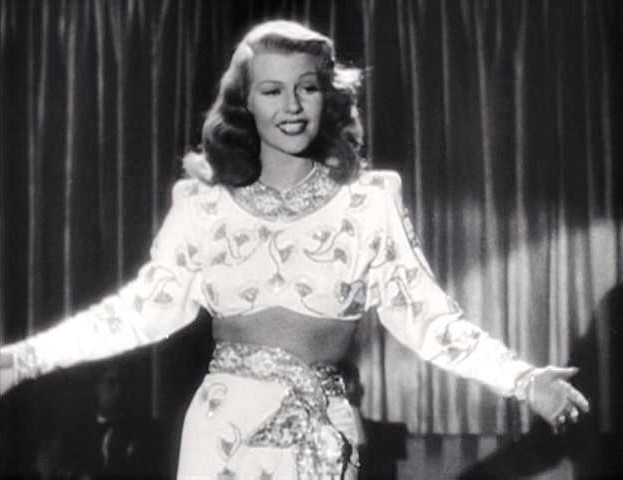The National Film Registry has announced its 2013 list of “culturally, historically or aesthetically significant” films to be preserved by the Library of Congress, and 10 of its 25 selections were directed by, written by, or starred women.
Animator Faith Hubley and documentarian Lee Dick were the two female filmmakers represented on the list, with dancer-choreographer Martha Graham possibly comprising a third. Anita Loos was the only woman screenwriter whose work was recognized by the Registry this year.
Classic Hollywood stars Rita Hayworth, Julie Andrews, Claudette Colbert, and Elizabeth Taylor had some of their best work chosen. The Registry added Hayworth’s Gilda, Andrews’ Mary Poppins, Colbert’s Midnight, and Taylor’s Who’s Afraid of Virginia Woolf? to the list of “works of enduring importance to American culture.”
The 2013 list serves as a great reminder that women have always been a part of the film industry, even if female directors and screenwriters have been marginalized or forgotten by historians.
Scroll down for a list of the women-directed, women-written, and women-centric films added to the National Film Registry:
“Ella Cinders” (1926)
With her trendsetting Dutch bob and short skirts, Colleen Moore brought insouciance and innocence to the flapper image, character and aesthetic. By 1926, however, when she appeared in “Ella Cinders,” Moore’s interpretation of the flapper had been eclipsed by the more overtly sexual version popularized by Clara Bow and Joan Crawford. The film is an archetype of 1920s comedy, featuring a star whose air of emancipation inspired her generation.
“Gilda” (1946)
“Gilda” defined the Hollywood glamorization of film noir. Director Charles Vidor capitalizes on the voyeuristic and sadomasochistic angles of the genre, focusing on Rita Hayworth poured into a strapless black satin evening gown and elbow-length gloves. George Macready and Glenn Ford round out the tempestuous triangle.
The Hole” (1962)
With “The Hole,” animators John and Faith Hubley created a chilling Academy Award-winning meditation on the possibility of an accidental nuclear catastrophe. Jazz great Dizzy Gillespie and actor George Mathews improvised a lively dialogue that the Hubleys and their animators used as the voices of two New York construction workers laboring under Third Avenue. Ominously but humorously, the Hubleys commented on the fears of nuclear devastation ever-present in cold war American culture during the year of the Cuban Missile crisis.
“The Lunch Date” (1989)
Adam Davidson’s 10-minute Columbia University student film examines the partial erosion of haughty self-confidence when stranded outside one’s personal comfort zone. A woman has a slice-of-life, train-station chance encounter with a homeless man, and stumbles through several off-key reactions when they share a salad she believes is hers. Winner of a 1990 Student Academy Award, “The Lunch Date” stands out as a simple, yet effective, parable on the vicissitudes and pervasiveness of perception, race and stereotypes.
Martha Graham Early Dance Films (1931–1944)
Perhaps the preeminent developer of modern dance, Martha Graham formed her own dance company in 1926. Four silent films featuring Graham document important early works: “Heretic” (1931), with Graham as an outcast denounced by Puritans; “Frontier” (1936), a solo piece celebrating western expansion and the American spirit; “Lamentation” (1943), a solo piece about death and mourning; and “Appalachian Spring” (1944), a multi-character dance drama, the lyrical beauty of which is retained even without the aid of Aaron Copland’s famous and beloved music.
“Mary Poppins” (1964)
Alleged to be Walt Disney’s personal favorite from the Disney canon, “Mary Poppins” is based upon a book by P.L. Travers. Screenwriters Bill Walsh and Don DaGradi, with the aid of songwriting brothers Richard and Robert Sherman, fashioned the movie musical about a most unusual nanny. Featuring equal parts innocence and sophistication, the film enjoyed an artistic and commercial success that solidified Disney’s knack for big-screen, non-cartoon storytelling and invention. Cast included Julie Andrews, Dick Van Dyke, Jane Darwell, Glynis Johns and Ed Wynn.
“Men and Dust” (1940)
Produced and directed by Lee Dick — a female pioneer in the field of documentary filmmaking — and written and shot by husband Sheldon, this labor advocacy film is about diseases plaguing miners in the midwest. Sponsored by the Tri-State Survey Committee, it is a stylistically innovative documentary and a valuable ecological record of landscapes radically transformed by extractive industry.
“Midnight” (1939)
Claudette Colbert, Don Ameche and John Barrymore are featured in this often overlooked Mitchell Leisen romantic comedy written by Billy Wilder and Charles Brackett that showcases Leisen’s strength in timing. He established the pace of a scene by varying the tone and cadence of his voice as he called “ready… right… action!” Penniless showgirl Colbert impersonates a Hungarian countess, aided by the aristocratic Barrymore, until she falls for a lowly taxi driver (Ameche) — all amidst a continental sumptuousness abundant in Paramount films of the era.
“A Virtuous Vamp” (1919)
Employing a title suggested by Irving Berlin, screenwriter Anita Loos, working with husband John Emerson, crafted this charming spoof on romance in the workplace that catapulted Constance Talmadge, the object of Berlin’s unrequited affection, into stardom. During the silent era, women screenwriters, directors and producers often modified and poked fun at stereotypes of women that male filmmakers had drawn in harsher tones. In this satire of male frailties, the knowing innocence of Loos’ character captured the imagination of poet Vachel Lindsay, who deemed the film “a gem” and called Talmadge “a new sweetheart for America.”
“Who’s Afraid of Virginia Woolf?” (1966)
Edward Albee’s 1962 stage triumph made a successful screen transfer in this adaption by Ernest Lehman, staged by Mike Nichols. Elizabeth Taylor and Richard Burton — both Oscar-nominated for their work (with Taylor winning) — each achieved career high-points in their respective roles as Martha and George, an older couple who share their explosive evening opposite a younger husband and wife, portrayed by George Segal and Sandy Dennis. Claustrophobic staging and stark black-and-white cinematography by Haskell Wexler echoed its characters’ rawness and emotionalism.






